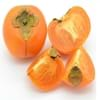Health Benefits
Arthritis treatment, Cancer prevention, Heart care
Arthritis treatment, Cures gastro-intestinal troubles, Diarrhea treatment, Gout treatment, Heart care, Kidney stone treatment, Liver health, Muscle pain relief, Treatment of alzheimer's disease
General Benefits
Anti-inflammatory properties, Cures cough, Cures fever, Digestive aid, Healing of wounds, Maintains healthy cholesterol level
Anti oxidant properties, Anti-inflammatory properties, Boosts immune system, Cures fever, Eye care, Fights against infections, Improves blood circulation, Improves eye vision, Maintains healthy cholesterol level, Treatment of common cold
Skin Benefits
Anti-aging benefits, Brightens and lightens complexion, Reduces wrinkles, Treatment of dark spots
Anti-aging benefits, Brightens and lightens complexion, Skin cleansing, Treatment of dark spots, Treatment of skin diseases
Hair Benefits
Promotes longer and healthier hair, Protects hair, Rejuvenates scalp, Shiny hair
Acts as moisturizer, Prevents hair loss, Promotes longer and healthier hair, Protects hair, Rejuvenates scalp, Remedy for split ends
Allergy Symptoms
Abdominal cramps, Hives, Itching, Nausea, Wheezing
Abdominal pains, Asthma, Conjunctivitis, Eczema, Itching, Nasal polyps, Runny nose, Skin rash, Swelling
Side Effects
Allergic reaction, Skin rash, Possibly unsafe during pregnancy
Diarrhoea, Nausea, Vomiting, Might cause change of urine color
Best Time to Eat
As a snack in the late afternoon, Eat the fresh ones, avoid mixing with any other foods, don't eat after meal., Morning time (before lunch), Strictly avoid empty stomach
Best if taken as a breakfast (or empty stomach), As a snack in the late afternoon, Don't consume at night and before bed, Eat the fresh ones, avoid mixing with any other foods, don't eat after meal., Morning time (before lunch)
Vitamin B5 (Pantothenic Acid)
Vitamin B9 (Folic acid)
Not Available
Vitamin C (Ascorbic Acid)
Vitamin K (Phyllochinone)
Not Available
Lutein+Zeaxanthin
Not Available
Calories in Fresh Fruit with Peel
Not Available
Calories in Fresh Fruit without Peel
Not Available
Calories in Frozen Form
Not Available
Not Available
Calories in Canned Form
Not Available
Varieties
Clementine, Dancy, King Mandarin, Murcott, Ponkan, Robinson, Satsuma and Sunburst
Ben Sarek, Ben Lomond, Ben Hope, Ben Connan, Ben Avon, Ben Gairn, Ben Dorain, Ben Hope, Ben Sarek, Ben Tirran, Big Ben, Ebony, Foxendown, Titania and Ben Alder
Origin
South-Eastern Asia
Asia, Europe
Grows on
Not Available
Trees
Soil Type
Well-drained
Sandy loam, Well-drained
Climatic Conditions
Sunny
Cold, Moist
Facts about
- It is known by another name ' Mandarin'.
- Oil extracted from its peel is used in various skin and hair care products.
- Tangerines is also known as the ‘Christmas Orange’ because it is used to stuff kids' stockings..
- The life of black currant plant is 20-30 years.
- Oil extracted from black currant seeds is used in production of skin care products.
- Black currant berries are major source of food for the birds.
Spirits
Not Available
Yes
Cocktails
Not Available
Not Available
Top Producer
China
Russia
Other Countries
Brazil, Iran, Italy, Japan, Korea, Morocco, Spain, Turkey
New Zealand, Poland, United Kingdom, United States of America
Top Importer
China
Not Available
Top Exporter
Spain
Not Available
Botanical Name
Citrus reticulata
Ribes nigrum
Synonym
Citrus clementina or Citrus nobilis
R. nigrum forma chlorocarpum or R. nigrum var. chlorocarpum or R. nigrum var. sibiricum or R. cyathiforme or R. olidum
Subkingdom
Tracheobionta
Tracheobionta
Division
Magnoliophyta
Magnoliophyta
Class
Magnoliopsida
Magnoliopsida
Order
Sapindales
Saxifragales
Family
Rutaceae
Grossulariaceae
Species
C. reticulata
R. nigrum
Generic Group
Citrus fruit
Saxifrage
Compare Tangerine and Blackcurrant
It is important compare Tangerine and Blackcurrant as both the fruits have a different nutritional value. Their comparison can be done on the basis of their vitamin and mineral content, calories, benefits as well as characteristics, making it easier for us to choose the best fruit for our diet. Their general health benefits are as follows:
Tangerine Benefits: anti-inflammatory properties, cures cough, cures fever, digestive aid, healing of wounds and maintains healthy cholesterol level.
Blackcurrant Benefits: anti oxidant properties, anti-inflammatory properties, boosts immune system, cures fever, eye care, fights against infections, improves blood circulation, improves eye vision, maintains healthy cholesterol level and treatment of common cold.
Fruits are also used as a remedy for various hair problems. The hair benefits of Tangerine are: promotes longer and healthier hair, protects hair, rejuvenates scalp and shiny hair and hair benefits of Blackcurrant are: acts as moisturizer, prevents hair loss, promotes longer and healthier hair, protects hair, rejuvenates scalp and remedy for split ends. Some fruits are known to cause allergic reactions. The allergy symptoms of first fruit are: abdominal cramps, hives, itching, nausea and wheezing and the symptoms of second fruit are: abdominal pains, asthma, conjunctivitis, eczema, itching, nasal polyps, runny nose, skin rash and swelling. Get sorted Tangerine vs Blackcurrant comparison with the help of fruit comparison tool by fruitvs.com.









